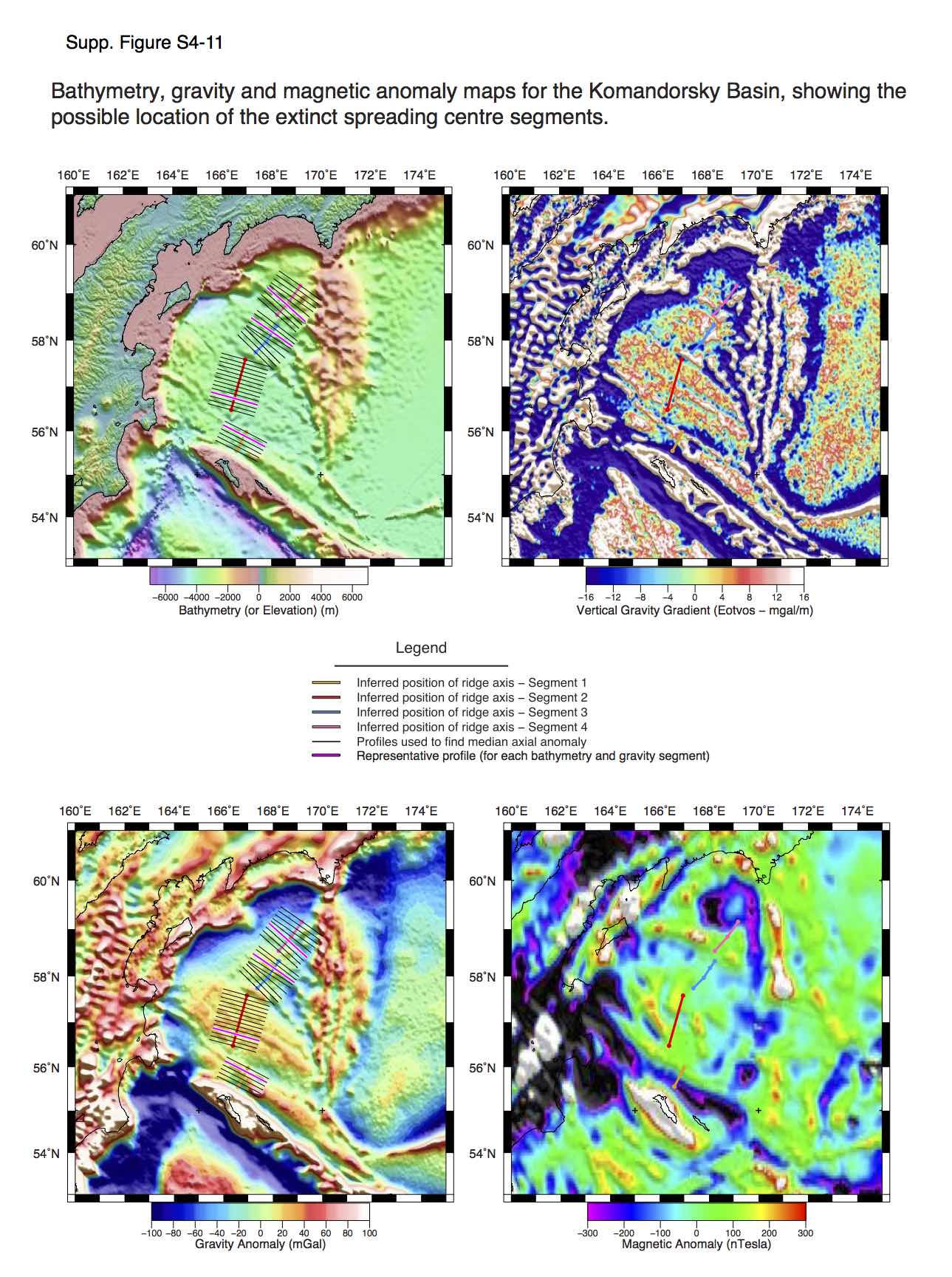| Ocean: | Marginal basin in NW Pacific, western Bering Sea |
| Spreading center type: | Possibly a back-arc basin spreading center |
| Time of cessation: | Ca. 25 Ma (Baranov et al., 2011). |
The Komandarosky Basin is relatively poorly understood, and its age and mode of formation remain controversial. The basin is bounded by the Shirshoy ridge to the east and the Kamchatka trench to the west. Bogdanov (1988) inferred that the spreading center was likely to have been oriented in an northeast-southeast orientation and that it was likely to have relatively close to the Kamchatka Peninsula, rather than equidistant from the basin boundaries. Bogdanov (1988) interpreted the trend of magnetic anomalies, suggesting that the direction of spreading was perpendicular to that seen within the Aleutian Basin. High heat flow is noted in the basin, with crust thickness of around 10.5km reported and a basalt sample from the west of the basin provides an absolute age of 29.6 Ma for ocean crust in that region (Bogdanov 1988).
The spreading rate at the extinct ridge axis has been inferred to be 1.3 cm/yr, from the 292 km of oceanic crust produced over an estimated duration of 26 million years and spreading is thought to have been generally (Taylor et al., 1981). Taylor et al. (1981) interpret the ridge axis as a broad, positive gravity anomaly.
Baranov et al. (1991) proposed that the extinct ridge that formed the basin may have been 'dissected' by a multi-phase opening of the basin. They argue that the basin is of Eocene age on the basis of heat flow within the crust and the expected depth-age relationship (Baranov et al., 1991). A north-south oriented graben is inferred as the extinct spreading center (Baranov et al., 1991).
A more recent study (Xu et al., 2014) provided a more recent age of 9.3 ± 0.8 Ma for a basalt found in the centrerof the Komandorsky Basin. Xu et al. (2014) conclude on the basis of Baranov’s observations that the basin formed in the early Cenozoic but was later modified and deformed. These modifications may contribute to the difficulty in finding the position of the former axis of spreading and we did not include this extnct ridge in our statistical analysis due to the uncertainty of the ridge location and timing.
Baranov, B.V. et al., 1991, The Komandorsky Basin as a product of spreading behind a transform plate boundary, Tectonophysics, v. 199, p. 237–269.
Bogdanov, N.A., 1988, Geology of the Komandorsky Deep Basin, Journal of Physics of the Earth, v. 36, p. 65–71.
Xu, J., Ben-Avraham, Z., Kelty, T. and Yu, H.S., 2014, Origin of marginal basins of the NW Pacific and their plate tectonic reconstructions, Earth-Science Reviews, v. 130, p. 154–196.


